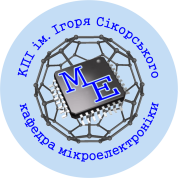The history of the Microelectronics Department begins on November 10, 1952, when a new Department called Dielectric Physics was established within the Faculty of Radio Engineering. Its base was the specialty “Physics of Dielectrics”, which previously belonged to the Faculty of Engineering Physics. This faculty was founded in 1948 and had three specialties: “Metal Physics”, “Technical Electronics” and “Dielectric Physics”. The created specialties met the requirements of that time for the training of engineers for new areas of industry and science. The first sets for the Faculty of Engineering Physics showed that its specialties are very popular with applicants: the competition was 7-8 applicants for one place.
Associate Professor V.I. Ilchenko recalls: “In the late 1940s and early 1950s, atomic physics unconditionally possessed the thoughts of young people. The powerful power of the atom fascinated us as much as modern youth, computer technology, information technology, etc. Therefore, learning about the existence of the Faculty of Engineering Physics at KPI, which promised to provide the fundamental physics, mathematics and engineering training needed to work in the field of nuclear physics, I made my choice without hesitation after graduating from high school. Of the three majors – metal physics, dielectric physics and technical electronics – I mentioned technical electronics in my introductory statement because it promised, among other things, the development of devices for nuclear research. But it didn’t quite happen as expected.
There were as many as seven entrance exams: language and literature (written and oral), mathematics (written and oral), physics, chemistry, foreign language. The passing score was 29.5. When it came to forming groups, it turned out that most of the applicants indicated technical electronics. The then dean Kalnibolotskyi M.L. conducted an interview with each and his will evenly divided us into groups, making sure that there is no other way. So I ended up in the specialty of dielectric physics. My best friend, with whom I dreamed of studying in the same group, got into the group of metal physicists. After more than 50 years, we have no regrets about this division.
My school youthful dream of nuclear physics did not come true, but work in solid state physics, semiconductor physics and semiconductor devices turned out to be no less exciting, for which I am extremely grateful to fate.”
From the first year the educational process at the faculty was focused on in-depth theoretical training of students. In addition to the required disciplines for polytechnics, such as higher mathematics, general physics, chemistry, resistance of materials, descriptive geometry, the curriculum included courses in mathematical physics, theoretical physics, atomic nucleus physics, and others. The best teachers and scientists of KPI were involved in the educational process: professors Smoherzhevskyi O.S. (analytical geometry), Zmorovych V.A. (mathematical analysis), Fainerman I.D. (general physics), Smirnov L.A. (theoretical physics), Khilchevskyi M.O. (theoretical mechanics). In the senior courses students were taught special disciplines: “Theory of alternating current”, “Electrical materials science”, “Electrical measurements”, “Electric machines”, “Physics of dielectrics”, “Special methods of dielectric measurements”, etc.
Students with great enthusiasm and perseverance learned their specialties in preparation for future work. Public organizations actively worked at the faculty, general meetings and evenings of rest were held. However, soon the students of the faculty were divorced in different corners. For some reasons, the Faculty of Engineering and Physics was disbanded: the specialty “Metal Physics” was transferred to the Faculty of Metallurgy, and the specialty “Physics of Dielectrics” and “Technical Electronics” became part of the Faculty of Radio Engineering, whose dean at that time was Ogiievskyi Volodymyr Vasylovych, who very kindly accepted the new addition and provided comprehensive support and assistance in the development of new specialties.
In 1952, a new department of the same name was established in order to organize the educational process and train specialists in the specialty “Dielectric Physics”. By order of the rector of the Kyiv Polytechnic Institute, Mykhailo Makarovych Nekrasov, an associate professor and candidate of technical sciences (future professor, doctor of technical sciences), was appointed head of the department. Mykhailo Makarovych was a very experienced specialist. He passed a large school of scientific and practical work. After graduating from the Leningrad Electrotechnical Institute in 1934, he worked in the high-voltage laboratory. prof. Smurova A.A., in 1939 he defended his dissertation and was appointed to the position of senior researcher LETI and at the same time engaged in teaching. In 1942, Mykhailo Makarovych the patient was evacuated from besieged Leningrad to Leninsk-Kuznetsky, where after his recovery he was appointed chief engineer of the Leningrad Coal Trust. Mykhailo Makarovych worked in this position until 1945, when by order of the Minister of Higher Education of the USSR he was appointed head of the Ivanovo Energy Institute. From this position Nekrasov M.M. was transferred to KPI.
The first employees of the department were senior teacher Serhiy Ivanovych Butko and head of laboratories Vitalii Yakovlevych Cherednychenko.
From the first days of creation the department is actively involved in the organization of the educational process. The department faced difficult tasks. The fact is that at this time a new industry began to develop rapidly – semiconductor electronics. Despite the fact that the department was called “Dielectric Physics”, it had to train engineers to meet the needs of the new industry. Therefore, such disciplines as “Semiconductor Physics”, “Semiconductor Devices”, “Semiconductor Device Technology” and others appear in the curriculum.
The department was located on the ground floor of the power wing of the main building. There was a lack of premises, equipment for new laboratories and, most importantly, a lack of teaching and research staff. All this had to be created, obtained, solved. And a small team led by M.M. Nekrasov did everything possible to create the material and technical base of the department and ensure the educational process. Connections were established with industrial enterprises of Kyiv and other cities of Ukraine, which helped to equip the laboratories of the department with devices and equipment.
In December 1953, the first graduation of students of DF-1 groups took place, who received the qualification of electrical engineers in the specialty “Dielectric Physics”. Many graduates of this group in the future became leading specialists, defended their dissertations, and Glunchuk K.D., Grybnikov Z.S., Kremenchutskyi L.S. defended doctoral dissertations.
Along with Soviet students, students from the People’s Republic of China studied at the department. Chinese students persistently mastered the Russian language, mastered theoretical disciplines and, almost all, were excellent students. Among the first Chinese graduates are the current Minister of Aviation of the People’s Republic of China – Liao Xiao-Kun, the former Minister of Electronics of the People’s Republic of China – Ma Go-Fung, Professor, Doctor of Technical Sciences – Zhou Shi-Ren.
In 1954, the first admission to graduate school was made. Her graduate student was a graduate of gr. DF-2 Kletchenkov I.I., who defended his dissertation in 1959. In the same year, the first scientific article was published and the first research economic work was commissioned by the Zaporizhia Transformer Plant.
In 1956, by the decision of the Ministry of Higher Education of the USSR, instead of the specialty “Dielectric Physics”, a new specialty “Semiconductors and Dielectrics” was created, and the department was named “Dielectrics and Semiconductors”. It was not a simple change of names, but a reorientation of training to a new, priority area of electronics – semiconductor electronics.
In 1962, by order of the Rector of KPI, the Faculty of Radio Electronics was established within the departments of “Dielectrics and Semiconductors”, “Electronic and Ionic Devices”, “Industrial Electronics”. The first dean of the faculty was appointed the head of the department of electronic and ionic devices, associate professor Vishnevskyi Adolf Ivanovych. The faculty was located in the newly commissioned building No. 12. The department was allocated more adapted rooms in the right wing of the building. On the ground floor there were mechanical workshops, a furnace laboratory with powerful furnaces for the synthesis of new materials, technological and chemical laboratories. On the ground floor there were educational and scientific laboratories and rooms of the head of the department and the head of the laboratory. The whole team took part in the development of new premises. In a short time, equipment was transported and installed, training laboratories were modernized, and methodological support for the educational process was prepared. From September 1, 1962, classes began in new laboratories.
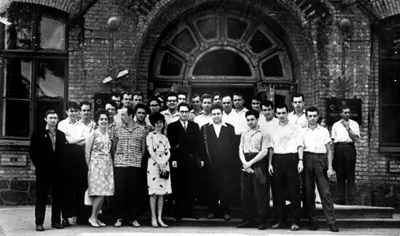
gr. DN11,12
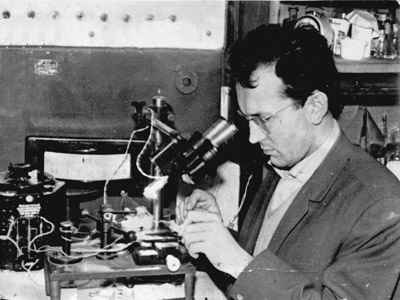

In 1967 the First All-Union Scientific and Technical Conference on Microelectronics was held on the basis of the department. It was attended by leading specialists of academic and industry research institutes, universities and manufacturing companies. Teachers and scientists of the department made more than 50 reports. This conference marked the beginning of the development of microelectronics in the USSR and Ukraine.
In 1971, the department began to publish a national interdisciplinary scientific and technical collection “Dielectrics and semiconductors”, whose editor-in-chief was Professor M.M. Nekrasov. The collection immediately became widely known among scientists not only in Ukraine but also far beyond its borders and greatly contributed to the development of solid-state electronics.
In 1953-1974 the staff of the department was replenished by the most talented and promising graduates: Yu.D. Kobtsev, I.I. Kletchenkov, G.I. Bohdan, A.M. Grotte, V.O. Khrashchevskyi, V.I. Ilchenko, V.V. Zaika, S.P. Fabrikov, Yu.M. Poplavko, B.Ya. Yazytskyi, V.S. Savoshchenko, L.G. Gultiaieva, B.M. Bieliakov, V.V. Lavrinenko, О.V. Bakuntsev, S.O. Bakuntseva, V.G. Tiniakov, O.V. Borysov, V.M. Kyrylenko, V.І. Molchanov, M.K. Rodionov, V.G. Tsykalov, L.P. Pereverzieva, Yu.I. Yakymenko, I.O. Kartashov, A.P. Miroshnichenko, V.S. Vyshnevskyi, V.S. Koval, O.M. Shmyrova, V.М. Pashkov, E.F. Klochko, V.V. Aleksieiev, O.L. Boychenko. Almost all of them defended their dissertations, and Yu.M. Poplavko, Yu.I. Yakimenko and O.M. Shmyrova became doctors of science, headed scientific schools in the field of ferroelectrics, functional piezoelectronics and semiconductor converters. In 1958, a specialist in the field of high-voltage aging of polymeric materials, associate professor M.S. Ilchenko, was transferred to the department from the department of high-voltage engineering in the future doctor of technical sciences, professor, first vice-rector of KPI, in 1961 from Lviv Polytechnic – specialist in semiconductor materials associate professor Dimarova E.N.
The following example testifies to the intensive training of scientific and pedagogical staff. The first among the graduates of the department became a candidate of sciences in 1959 I.I. Kletchenkov. And since the mid-70’s, more than 10 PhD theses have been defended annually.
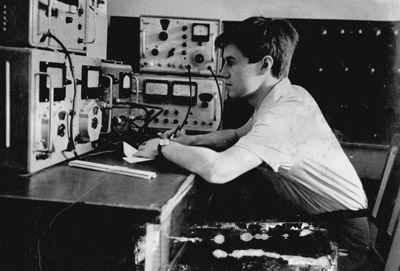
M.M. Nekrasov reacted very sensitively to everything new and skillfully chose the most promising scientific areas. He was a supporter of multifaceted research, which was not always supported by the leadership of the research part of the institute. But this approach allowed to expand scientific ties, to conclude agreements for the implementation of economic contract research work, to involve specialists in various fields in scientific research and to be in a continuous creative search.
Research work was conducted, as a rule, on the so-called most important topics, ie under agreements with defense companies. The volume of such work in some years reached one million rubles.
The most famous results for those years were achieved in the study and use of ferroelectric and piezoelectric materials under the guidance of Professor Poplavko Yu.M. and senior researcher Lavrinenko V.V.
The department implemented many scientific developments at industrial enterprises of Ukraine and the Soviet Union.
The best scientific achievements of the department have been repeatedly awarded at international and All-Union exhibitions, including medals of the ENEA. The best scientists became laureates of the O.S. Popov prize. For the development of the world’s first fundamentally new engine on the piezoelectric effect (piezoelectric engine) candidate of technical sciences V.V. Lavrinenko was awarded a diploma of the international exhibition in Delhi (India).
In 1974-1985 the department was headed by Professor, Doctor of Technical Sciences Yurii Maksymovych Kalnibolotskyi. During this period the scientific and pedagogical activity was improved, the material and technical base was especially developed: a branch laboratory of piezoelectric drives, an interdepartmental educational-scientific technological laboratory were created, educational laboratories were modernized, curricula and training programs were updated.
From 1985 to 2014 the department is headed by Yakymenko Yurii Ivanovych, Professor, Doctor of Technical Sciences, Academician of the National Academy of Sciences of Ukraine.
Earlier, in 1983 he was appointed Dean of the Faculty of Electronic Engineering.
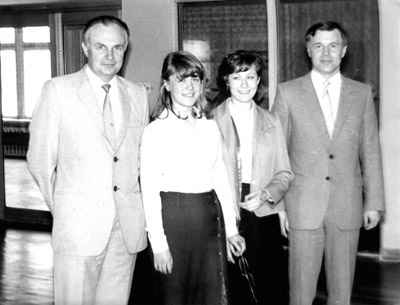
The development of microelectronics, new technologies in the production of integrated circuits have demanded their specialists. In this regard, in 1985 began training engineers in “Microelectronics and Semiconductors”, and the department was renamed the Microelectronics Department. Along with the traditional scientific directions, new ones began to develop actively: functional electronics, semiconductor energy converters, microwave microelectronics. Scientific laboratories continue to develop, their team is formed.
The structure of the department includes laboratories: functional piezoelectronics (head professor, doctor of technical sciences Yakymenko Y.I.), piezo drive (head senior researcher, candidate of technical sciences Lavrinenko V. V.), microwave electronics (head professor, doctor of physical and mathematical sciences Poplavko Y.M., associate professor, candidate of technical sciences Molchanov V.I.), interdepartmental educational-scientific technological (head associate professor, candidate of physical and mathematical sciences Rodionov M.K.), semiconductor converters (head senior researcher, candidate of technical sciences Shmyrova O.M.), semiconductor structures (head associate professor, candidate of technical sciences Borysov O.V.), Semiconductor physics (supervisor associate professor, candidate of technical sciences Tiniakov V.G.). This period in the development of the department became a time of restructuring, the search for new forms of connection with social practice.
At that time, much attention was paid to improving the practical training of students, reducing the time of adaptation of graduates to jobs in enterprises. To this end, a branch of the department is being established at the Crystal Production Association in Kyiv, the leading specialists of which are involved in lecturing on IC design, modeling of semiconductor structures and technological processes, and laboratory work directly on the existing equipment of the enterprise. Since the 1987/88 academic year, Production Association “Crystal” provides computer classes to the department and provides practical training to work on computers for students majoring in. Great help and support in the creation and operation of the branch of the department was provided by the general directors of Production Association Sazonov, Tsyba, chief engineers Kizema I.G., Tsurkanov L.M. (specialists I.G. Kizema and L.M. Tsurkanov many were chairmen of the State Examination Commission in the specialty “Microelectronics and Semiconductor Devices”).
Scientific relations with the Research Institute “Saturn” (General Director Gassanov L.G.), “Orion” (General Director Zvershkhovskyi I.V.), Production Association “Generator” (General Director Guzov D.M., Zakhrabov M.N.) and other enterprises of Kyiv by order of which many scientific researches were carried out at the department.
Profile enterprises of Kyiv, Zaporizhia, Kherson, Bryansk and other cities of Ukraine and the USSR were used as bases of practice.
Especially friendly relations have been established between the Department and the Institute of Semiconductor Physics of the Academy of Sciences, which is headed by a prominent scientist in the field of semiconductor electronics, Academician Serhii Sviechnikov. The most theoretically prepared students of the specialty were sent to this institute for internships and diploma design, who, as a rule, remained to work there after graduation. Many of them became candidates and doctors of sciences, leading specialists of the institute.
Serhii Vasylovych personally takes an active part in the educational process of the department: he lectures on the problems of microelectronics and optoelectronics, manages diploma and master’s theses. His ideas, his vision for the further development of microelectronics have a fruitful effect on improving training.
A great event in the life of the department, recognition of the high level of its scientific work in the field of functional electronics was the award in 1987 head Yakymenko Y.I. State Prize of the USSR in the field of science and technology.
Higher school reforms in Ukraine began in the early 1990s. The department takes an active part in the experiment on the introduction of higher education specialists in higher education.
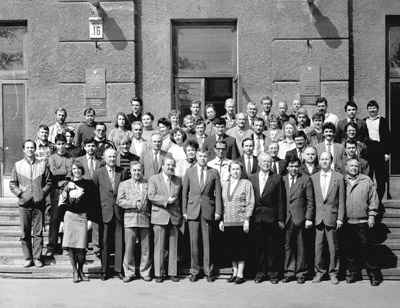
The department has developed curricula for bachelors in the direction of 0908 – “Electronics”, specialists and masters in the specialty 090801 – “Microelectronics and semiconductor devices”, which were approved by the educational commission of the Ministry of Education for all higher education institutions of Ukraine. The department was the first in Ukraine to graduate with a master’s degree in 1997.
In 1991 a new specialty 090804 was created at the Faculty of Electronics – “Physical and Biomedical Electronics”. By order of the Minister of Education of Ukraine, the training of specialists in this specialty is entrusted to two departments – physical and biomedical electronics and microelectronics. Initially, the enrollment of students in the new specialty was in the number of two groups only by the Department of FBME. However, the demand for such specialists far exceeded the capacity of one department. Therefore, since 1997, the Microelectronics Department also recruits one group for the specialty FBME. At the same time, the content of training specialists in the specialty “Microelectronics and semiconductor devices” is changing. Such disciplines as electronic systems, functional electronics, special course of microelectronics are introduced into the curricula.
Computer training of students is taking a new level. The department creates computer classes, local computer networks, which are connected to the world network “Internet”. Curricula include the continuous study of computer science, the use of computers in course and diploma design.
In the early 90’s, despite the difficult situation of electronics in Ukraine, the harsh conditions of transition to the market, the department managed not only to maintain scientific potential, but and to expand scientific topics. In 1994 the department creates a research institute of applied electronics. Corresponding Member of the NASU Yakymenko Y.I. is appointed the Director of the Institute, and Bohdan O.V., a graduate of the Department, is appointed his Deputy. The institute includes all scientific departments of the Microelectronics Department and a number of scientific laboratories of other departments of the Faculty of Electronics. At the Research Institute of Applied Electronics, students have the opportunity to participate directly in research. Here are the main areas of work of the institute:
– functional electronics based on ferroelectric and piezoelectric materials,
– piezoelectric motors,
– energy saving technologies,
– photoelectric energy converters,
– dielectric materials for devices Microwave range;
– materials and devices of optoelectronics;
– microelectronic sensors of physical quantities;
– elements and devices of medical electronics;
– modeling of physical phenomena in materials and devices.
Today the department prepares bachelors, masters and doctors of philosophy (PhD) in the specialty 153 “Micro- and Nanosystem Engineering” (educational program “Micro- and Nanoelectronics”). It is the base among related departments in Ukraine on the organization of the educational process according to the degree system of training. This system provides basic training in natural sciences, special knowledge in materials science, design and engineering, technology and application of chips for computer, information-measuring and control equipment, as well as for digital video, audio and communication.
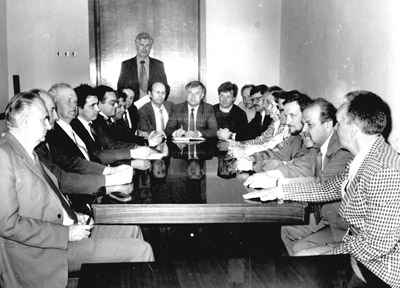
Graduates are able to continue their education in almost any field of science and technology, to become experts in the global electronics market. You can also get a diploma of education in the second specialty in the field of industrial management and marketing.
